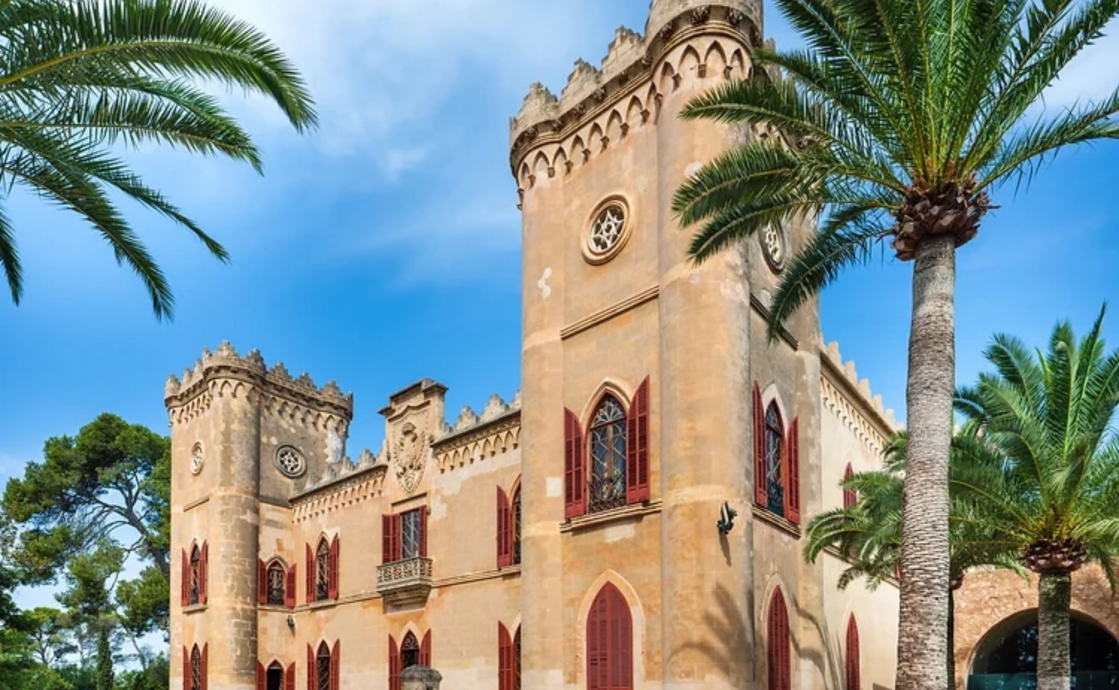
Discovering Bendinat Castle
Legend has it that Bendinat Castle, perched on a hill between Calvià and Palma, earned its name when the Christian king, Jaume I, paused at this site to rest during the conquest of Mallorca from Santa Ponsa.
He and his troops ate, and after what, as the story passed down from generation to generation goes, was a lavish feast, the monarch exclaimed, pleased, "be hem dinat," meaning "we have eaten well." Hence, the place began to be known by this toponym.
Another facet of folk wisdom suggests that it wasn't a banquet that Jaume I and his troops found, but a handful of garlic that tasted heavenly after days without food. Grateful for the modest meal, the king is said to have uttered those words.
While the legend is widespread and accepted, the reality differs when delving into dictionaries and texts by Antoni Maria Alcover and Francesc de Borja Moll, two prominent literary figures from Mallorca.
These authors propose that etymologically, Bendinat derives from the Arabic term 'ibn dinat,' which in Spanish means 'hijo de imberbe' (son of a beardless).
Setting aside toponymic terms, the reality is that Bendinat was once an ancient farmhouse, and today, a beautiful castle stands in its place. Although not of medieval origin, it is fascinating and worth exploring.
The Whim of a Marquis
Although resembling medieval fortifications in Central Europe, Bendinat Castle is, in fact, a neogothic historicist construction commissioned by the Marquis de la Romana in the 19th century.
It consists of a set of manor houses dominated by the castle, featuring a rectangular plan with four towers and two stories.
The central portal leads to a vast hall adorned with a large fireplace in medieval style but with a neogothic touch. In the former dining room, 19th-century wall tapestries, originally intended to shield the castle's inhabitants from drafts and winter cold, add to the ambiance.
A portal leads to the staircase of the house lords, reaching the first floor with a room adorned in red damask and a gallery with railings made of metal structures, beams, and embellished with pierced panels.
The castle's inner courtyard is surrounded by a gallery of 28 pointed arches. From here, one can access the chapel, which, nowadays, lacks religious images or altars.
Next to Bendinat Castle, the Houses of Peasants
In the northeast part of the castle, traditional peasant houses can be found. All of them have a square plan and an entrance with a lowered arch.
Here, you'll also find the kitchen, a very large room featuring a bell with a central hearth, and in the background, the olive mill.
The gardens are truly beautiful, adorned with a pergola, a small fountain, cacti, and massive ficus and palm trees. In this case, both the three-arch gallery and the plant ensemble have a neobaroque character.
In Mallorca, there are many historical constructions that are well worth visiting. Are you up for an excursion? You can refer to this post for more information.,




